Why are Hollow-core fiber(HCF)becoming increasingly popular?
Why are Hollow-core fiber(HCF)becoming increasingly popular?
With the development of science, the advancement of technology, changes in people's lifestyles, and the increasing demand for life and entertainment, there is a higher demand for the internet.
The digital lifestyle of residents (high-definition videos, remote meetings, online live streaming, online games, etc.), artificial intelligence, the digital transformation of the entire industry, and the wave of AI technology have all put forward demands for commercial networks of 400G, 800G, and even higher.
At present, the 400G solution is gradually being commercialized on a large scale, and the industry's attention will be focused on the technical standard system beyond 400G. How to achieve commercial optical communication networks of 800G or even higher is the focus of attention in the communication industry. Below we will only introduce the application of fiber optic types in optical communication networks.
The current mainline backbone network fiber is G.652D fiber. After years of verification, the industry has determined that G.654E fiber will be the new successor. G.654E fiber has the capability for large-scale production and will be deployed on long-distance trunk lines on a large scale. Some low loss optical fibers of the G.654 series have also become the preferred choice for long-distance transmission across oceans in submarine cable systems. And in addition to traditional optical fibers, industry professionals also believe that multi-core fibers and hollow-core fiber have broad application prospects. Multi core fiber is a type of spatial division multiplexing, in which more fiber cores are inserted into one fiber to significantly increase its capacity. hollow-core fiber refers to directly making the fiber hollow and replacing the glass fiber core with air. hollow-core fiber has been proven to bring greater capacity, lower latency, smaller transmission loss, and ultra-low nonlinearity, and is widely regarded as one of the most promising technologies in optical communication by the industry.
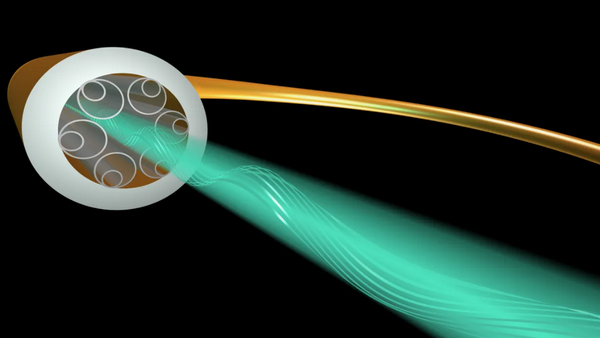
What is hollow-core fiber? -- One of the most promising technologies in optical communication
Hollow-core fiber is a new type of optical fiber. The traditional optical fibers we commonly use now are glass core fibers. Inside the optical fiber, there is a core made of quartz glass (mainly composed of silicon dioxide). Hollow-core fiber, as the name suggests, means that there is no longer a physical fiber core inside the fiber, but rather "empty" - only air, inert gas, or vacuum.
What are the advantages of hollow-core fiber?
l Lower latency: through v=c/n (v is the propagation speed of light in a certain medium, c is the propagation speed of light in vacuum, and n is the refractive index of this medium) Formula, we know that the speed of light propagation varies in different media. According to experimental data, if hollow-core fiber is used, the propagation speed of optical signals will be increased by about 47% compared to traditional glass core fiber. This will significantly reduce the latency of fiber optic communication by about one-third. According to calculations by relevant research institutions, the time delay of glass core fiber is approximately 5 microseconds per kilometer, while that of hollow-core fiber is 3.46 microseconds per kilometer. A distance of 1000 kilometers can reduce latency by 1.54 milliseconds.
l Lower loss: The transmission loss of hollow-core fibers is also an important technical indicator of optical fibers. The lower the loss of optical fiber, the farther the optical signal can be transmitted in the fiber, making it easier to identify and demodulate the signal at the opposite end. At present, hollow-core fibers can achieve a loss of 0.174dB/km, which is on par with the performance of the latest generation of glass core optical fibers. According to research institutions, the theoretical minimum loss limit of hollow-core optical fibers can be as low as below 0.1dB/km, which is smaller than that of ordinary glass core optical fibers (0.14dB/km).
l Support more optical bands: Hollow-core fiber does not pick out light and can easily support light in multiple bands such as O, S, E, C, L, U, etc.
l Reduced nonlinear effects: The nonlinear effects of hollow-core fibers are 3 to 4 orders of magnitude lower than those of conventional glass core fibers, allowing for a significant increase in incoming optical power and thus improving transmission distance.
l Capable of transmitting high-power lasers: Traditional glass core optical fibers absorb laser energy during high-power laser transmission, leading to thermal accumulation at material defects or uneven temperature distribution between the core and cladding, resulting in fiber damage. In the case of hollow-core fibers, over 99% of the optical power is transmitted in air, and the optical field and material weight are extremely small. Therefore, at the same transmission power, there is less material absorption, resulting in a higher laser damage threshold.
l In addition, hollow-core fibers have advantages such as low dispersion, low thermal sensitivity, and radiation resistance.
Hollow-core optical fibers have numerous advantages, broad application prospects, high research and application value, and are also necessary for the development of human technology and life.
The development of hollow-core fiber?
As early as the 1960s, someone proposed the idea of hollow-core fibers. However, at that time, material technology was not yet feasible.
In 1987, American applied physicists Eli Yablonovitch and Sajeev John first proposed the concept of photonic crystals, breaking the deadlock.
A photonic crystal, also known as a photonic bandgap material, is an artificial microstructure composed of periodically arranged media with different refractive indices.
In short, photonic crystals have the function of "wavelength selection", which can selectively allow light of a certain wavelength band to pass through while blocking light of other wavelengths from passing through.
Based on the theory of photonic crystals, in 1991, P. St. J. Russel from the University of Southampton in the UK first proposed the concept of photonic crystal fiber (PCF).
In 1996, colleagues of Philip Russell, J.C. Knight and Tim Birks from the Optoelectronics Research Center at the University of Southampton, successfully developed a solid core photonic crystal fiber sample and confirmed the conduction characteristics of light in photonic crystal fibers.
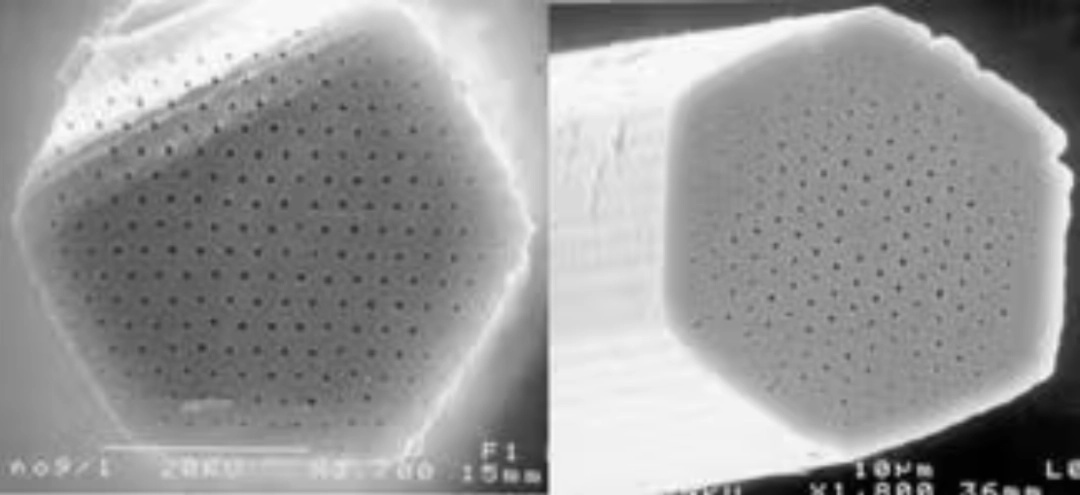
The above picture is a cross-sectional view of the optical fiber at that time. As you can see, there are a large number of small holes and no obvious fiber core.
The birth of photonic crystal fibers has successfully attracted attention in the field of optical research. Many teams have started to join the research on photonic crystal fibers, which has accelerated the progress of related studies.
In 1998, Jonathan Knight and others announced the discovery of the "photonic bandgap guided wave effect in optical fibers" and prepared the world's first photonic bandgap photonic crystal fiber (PBG-PCF).
In 1999, Philip Russell et al. published a paper in Science proposing the Hollow-Core Single Mode Photonic Band Gap Photonic Crystal Fiber (HC-SM-PBG-PCF). Shortly thereafter, R.F. Cregan et al. officially developed the sample. (Note that this should be the world's earliest hollow fiber optic cable.)

As shown in the above figure, the entire photonic bandgap photonic crystal fiber (PBG-PCF) looks like a honeycomb.
Therefore, it was also known as Holey Fiber (HF) and Micro Structured Fiber (MSF) at that time.
The core of an optical fiber is hollow and filled with air. The cladding of optical fibers consists of a large number of air holes arranged periodically, all with precisely set aperture sizes, hole spacing, and periods.
When the optical signal enters the fiber, photons will enter the cladding from the air core. The periodically arranged air holes in the cladding form a photonic crystal structure, preventing photons of specific frequencies from passing through the cladding and allowing them to bounce back into the fiber core. In this way, photons can only continue to propagate along the air fiber core.
After the emergence of photonic bandgap photonic crystal fibers, although scientists have been trying to improve them, the problem of loss still cannot be solved. The loss of this type of optical fiber has always been at the level of dB/Km, and there are difficulties in its preparation.
This has hindered the practical application of hollow core optical fibers. So, scientists continued to explore and wanted to find new hollow fiber structures.
Researchers have proposed Kagome type hollow core optical fibers. Later, based on the research on Kagome type hollow core fibers, anti resonant hollow core fibers were proposed, becoming the mainstream research direction in the industry.
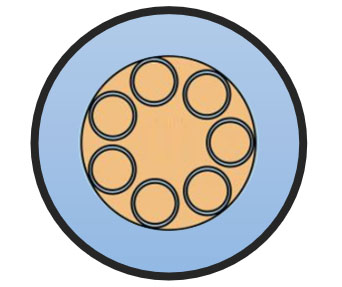
In 2019, the team led by Francesco Poletti from the Optoelectronics Research Center at the University of Southampton invented the famous Nested Anti Resonant Nodeless Fiber (NANF), which reduced the loss of hollow core fibers to 1.3dB/km.
Just one year later, in 2020, Lumensity, an industrial subsidiary of the University of Southampton, reduced the loss of NANF fiber to 0.28dB/km, causing a sensation in the entire industry.
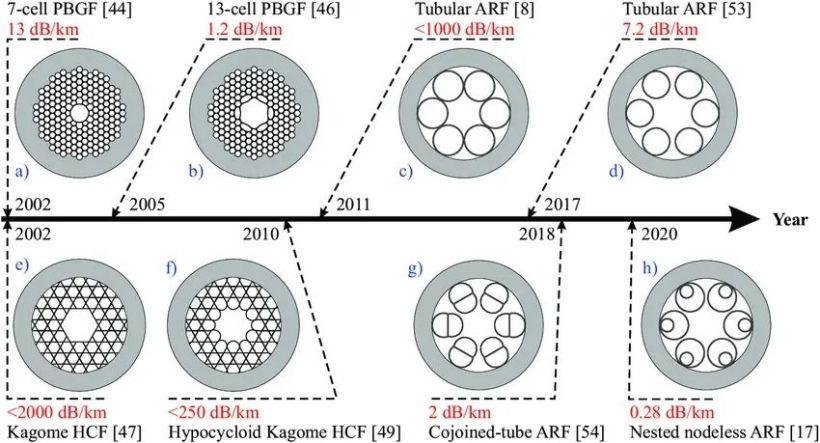
We can take a closer look at the structure of NANF fiber:
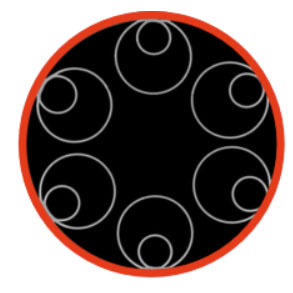
The middle of NANF fiber is an inflatable core. Surrounding the fiber core are parallel glass tubes. Inside each glass tube, another glass tube is nested.
This is called single nesting. If we embed another one, it's double nesting.
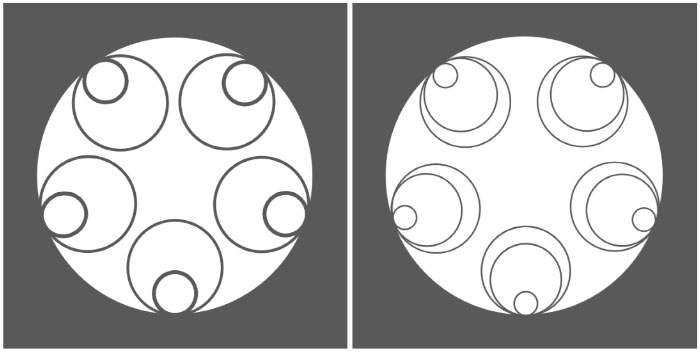
Resonance, also known as resonance or interference. Two waves, with consistent steps and maximum amplitude, are resonant.
The nested glass tubes are designed to form a "resonant cavity".
The transmission spectrum exhibits multiple peaks. The peaks are separated into multiple high reflection regions, also known as anti resonance windows. Within these windows, entering from the hollow core will result in high reflection, greatly reducing the leakage loss of the fiber.
There is no contact between the glass tubes on the sides, which is called nodeless. If there are nodes, it will result in significant losses.
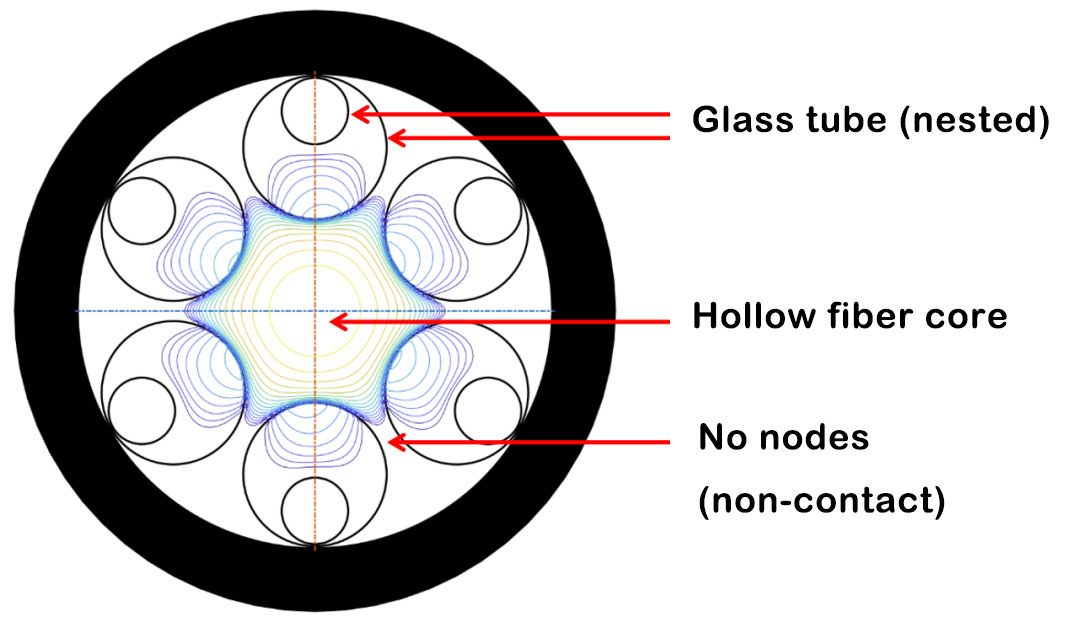
NANF fiber solves the bottleneck limitation of photonic bandgap photonic crystal fibers, and its theoretical loss and transmission bandwidth are superior to current glass core fibers, thus attracting industry attention.
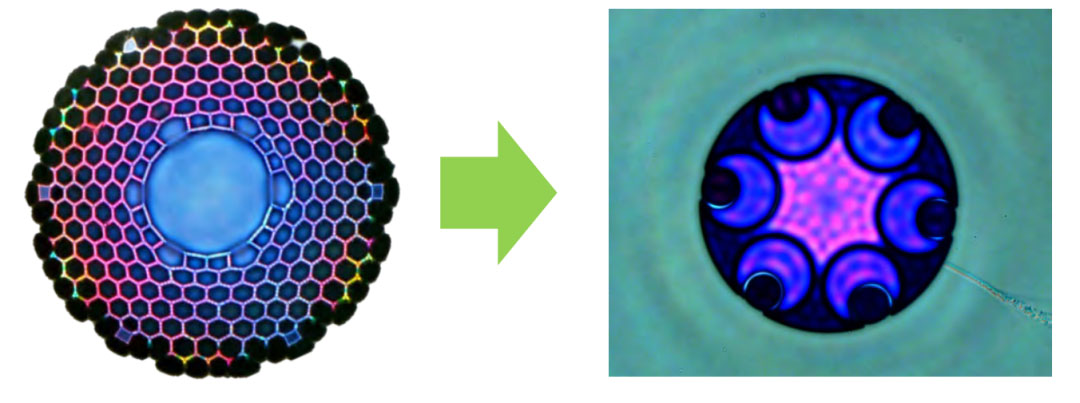
British Telecom, Comcast, euNetworks and other companies have all adopted Lumensity's NANF hollow fiber technology in recent years.
British Telecom has used NANF for the construction of mobile network bearer networks and conducted quantum key distribution tests on NANF.
Comcast has partnered with Lumenisity to deploy a 40 kilometer hybrid air core fiber and traditional fiber link in Philadelphia for compatibility testing and validation.
EuNetworks has deployed a 14 kilometer long Lumensity hollow fiber optic cable between London and Basildon in the UK to connect two data centers that are crucial for financial transactions.
Due to the enormous commercial value of hollow fiber optics, Microsoft directly acquired Lumensity on December 9, 2022. The transaction price is unknown
At present, leading fiber optic manufacturers in China, such as Changfei and Hengtong, are actively laying out hollow fiber optic technology. Many universities are also conducting research in this area. The three major telecom operators are also highly concerned about the progress of hollow fiber technology.
I believe that in the next few years, the research and implementation of hollow core optical fibers will further accelerate.
 Why are Hollow-core fiber(HCF)
Why are Hollow-core fiber(HCF)
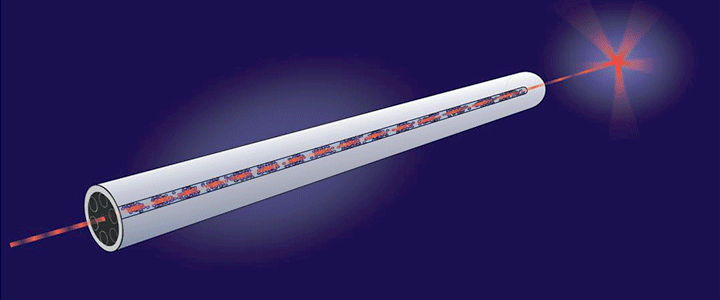 China Mobile launched the worl
China Mobile launched the worl
